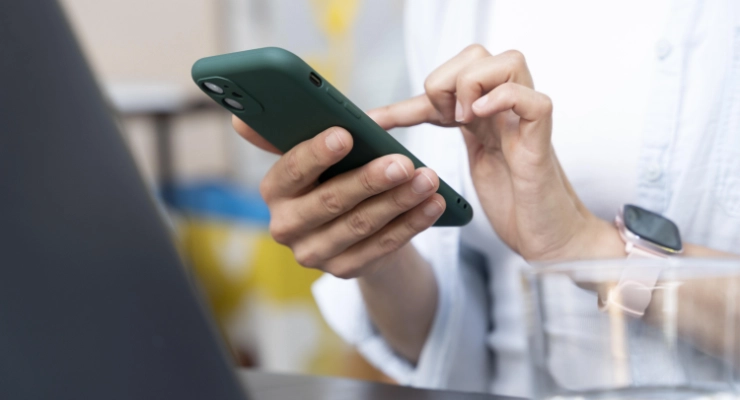Boundaries are vital. Delivery is everything.
Why This Matters
A patient walks up and asks if you can squeeze them in today—even though the schedule is full. Another insists on getting a medication refill early, despite policy. A third wants lab results before the doctor has reviewed them. You know the answer is no. But saying it? That’s the hard part.
Saying no in healthcare isn’t just a customer service challenge—it’s a balancing act between policy, professionalism, and empathy. The fear is real: say it the wrong way, and you risk an upset patient, a complaint, or even losing their trust. But here’s the truth:
it’s not the “no” that upsets people—it’s how it’s delivered.
Why Saying Yes to Everything Backfires
At first glance, saying yes feels like the safest option. You avoid conflict, you please the patient, and things move on. But over time, always saying yes can erode boundaries and lead to real issues.
Staff burnout increases when policies are ignored to make exceptions. Favoritism—real or perceived—creates tension. And the clinic runs less efficiently when rules are bent based on who asks loudest. Worse, it can backfire with patients too. What one patient gets away with, another won’t—and that inconsistency damages trust.
Saying no isn’t about control—it’s about clarity, consistency, and protecting everyone involved.
Understand the Real Emotion Behind the Ask
Before responding, take a beat to recognize the emotion under the surface. When patients push for exceptions, they’re rarely trying to be difficult. They may be scared, overwhelmed, or confused.
A patient asking for a rushed appointment may be battling something they haven’t fully shared. Someone asking for a waived fee might be facing a financial struggle they’re too embarrassed to explain. Recognizing that the ask is sometimes a
signal of distress helps you respond with empathy—even when the answer has to be no.
That simple shift—
seeing the person, not just the request—changes your entire tone.
Tone Over Words: Calm, Kind, Clear
You could have the perfect phrase, but if your tone is sharp or impatient, it won’t land well. In fact,
how you say something matters more than the words themselves.
Slow your speech slightly. Lower your tone. Use soft, non-defensive body language: relaxed posture, gentle eye contact, and open gestures. Avoid sounding robotic or overly apologetic—just be calm, kind, and confident.
Saying no isn’t rude. But sounding cold, rushed, or dismissive
is. The best delivery feels respectful, patient, and emotionally steady—even when the situation isn’t.
Magic Phrases That Say “No” Without Sounding Harsh
Here are several phrases that communicate a clear boundary while keeping things respectful and constructive:
- “Let me explain how we usually handle that.”
This sets up a policy explanation without sounding combative.
- “That’s outside what I can authorize today, but I’m glad you brought it up.”
Reinforces limits while affirming the question.
- “I completely understand why you’d want that—let’s see what we can do today.”
Acknowledge emotion first, then shift to solutions.
- “Here’s what I recommend instead.”
Clear, simple redirection with authority.
- “Our policy doesn’t allow that, but I’m here to help however I can within those guidelines.”
Shows you’re a helper—not a gatekeeper.
Each of these phrases gently replaces a blunt “no” with language that conveys structure, professionalism, and compassion—all while holding firm.
Offer an Alternative Whenever Possible
When someone hears “no,” they’re immediately looking for “what now?” Your next move should answer that.
If you can’t schedule an appointment today, offer the next available date. If they want early access to results, offer to follow up as soon as the doctor has reviewed them. Even if you can’t give them what they want, giving them
something—information, direction, or a next step—keeps the interaction positive.
Think: “I can’t do X, but I
can do Y.”
Don’t Over-Explain or Apologize Excessively
It’s tempting to overcompensate when saying no—especially if you don’t want to seem uncaring. But long explanations often make you sound unsure or invite more push back.
A concise, kind explanation followed by next steps is all that’s needed. Apologizing too much may even make patients feel like you’re hiding something or that the policy is unfair. Instead, stand with confidence behind your professionalism.
Say:
“That’s something our policy doesn’t allow, but here’s what we recommend instead.” Then move forward.
When “No” Needs to Be Final—And That’s Okay
Sometimes, patients push back. They demand to speak to someone else, raise their voice, or make threats. In those moments, you may have to repeat yourself calmly and stick to the boundary.
Remain kind but firm. Do not escalate. If necessary, involve a supervisor or step away to protect yourself from verbal aggression. You are not required to absorb anger just to keep the peace.
Remind yourself:
Saying no doesn’t make you unkind—it makes you consistent and responsible.
Saying No Is Part of Caring
In healthcare, we often equate compassion with always saying yes. But real compassion includes honesty, structure, and boundaries.
Saying no respectfully can actually
build trust—because it shows your practice has standards, communicates clearly, and values fairness for all patients.
The more confident and calm you become with these moments, the less stressful they feel. So next time you need to say no, remember: delivery is everything. And when done right, “no” can still feel like care.





